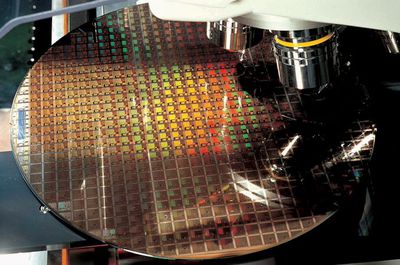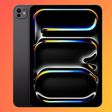TSMC 2nm Chip Production Hits 60% Yield, on Track for iPhone 18 Pro
TSMC has achieved better-than-expected results in trial production of its 2-nanometer chip technology, with yield rates exceeding 60%, according to Taiwanese supply chain sources (via Liberty Times Net). The news suggests the company is well-positioned to begin 2nm mass production in 2025, which could see its use in Apple's iPhone 18 Pro models the following year.

The semiconductor manufacturer is reportedly conducting risk trial production at its Baoshan facility in Hsinchu, northern Taiwan, where it has implemented a new nanosheet architecture that promises a significant advancement over the current 3nm FinFET process. The company plans to transfer this production experience to its Kaohsiung plant for mass manufacturing, according to the report.
TSMC's progress bodes well for Apple, with a September report from analyst Ming-Chi Kuo and a more recent rumor claiming that Apple's 2026 iPhone 18 Pro models will exclusively feature chips built on TSMC's 2nm process and 12GB of RAM. The standard iPhone 18 models are expected to continue using an enhanced 3nm process due to cost considerations.
The 2nm process is said to be generating substantial interest from potential customers, particularly in the AI sector. Indeed, company CEO C.C. Wei has noted unexpectedly high demand for the upcoming 2nm technology, suggesting production at scale will be ramped up as soon as is possible to meet that demand.
TSMC's roadmap includes the 2026 introduction of an A16 process (1.6nm-class – not to be confused with Apple's chip nomenclature), which will combine Super Power Rail (SPR) architecture with nanosheet transistors. SPR is expected to provide an 8% to 10% performance increase at the same voltage and complexity, a 15% to 20% power demand decrease at the same frequency and transistor count, and a 7% to 10% chip density increase, depending on the design.
Popular Stories
Since the iPhone X in 2017, all of Apple's highest-end iPhone models have featured either stainless steel or titanium frames, but it has now been rumored that this design decision will be coming to an end with the iPhone 17 Pro models later this year.
In a post on Chinese social media platform Weibo today, the account Instant Digital said that the iPhone 17 Pro models will have an aluminum...
Apple is continuing to refine and update iOS 26, and beta three features smaller changes than we saw in beta 2, plus further tweaks to the Liquid Glass design. Apple is gearing up for the next phase of beta testing, and the company has promised that a public beta is set to come out in July.
Transparency
In some apps like Apple Music, Podcasts, and the App Store, Apple has toned down the...
In select U.S. states, residents can add their driver's license or state ID to the Wallet app on the iPhone and Apple Watch, providing a convenient and contactless way to display proof of identity or age at select airports and businesses, and in select apps.
Unfortunately, this feature continues to roll out very slowly since it was announced in 2021, with only nine U.S. states, Puerto Rico,...
Apple is expanding the ability to add an Apple Account Card to the Wallet app to more countries, according to backend Apple Pay changes.
With iOS 15.5, Apple updated the Wallet app to allow users to add an Apple Account Card, which displays the Apple credit balance associated with an Apple ID.
If you receive an Apple gift card, for example, it is added to an Apple Account that is also...
Apple will launch its new iPhone 17 series in two months, and the iPhone 17 Pro models are expected to get a new design for the rear casing and the camera area. But more significant changes to the lineup are not expected until next year, when the iPhone 18 models arrive.
If you're thinking of trading in your iPhone for this year's latest, consider the following features rumored to be coming...
Three out of four iPhone 17 models will feature more RAM than the equivalent iPhone 16 models, according to a new leak that aligns with previous rumors.
The all-new iPhone 17 Air, the iPhone 17 Pro, and the iPhone 17 Pro Max will each be equipped with 12GB of RAM, according to Fixed Focus Digital, an account with more than two million followers on Chinese social media platform Weibo. The...
Apple should unveil the iPhone 17 series in September, and there might be one bigger difference between the Pro and Pro Max models this year.
As always, the Pro Max model will be larger than the Pro model:iPhone 17 Pro: 6.3-inch display
iPhone 17 Pro Max: 6.9-inch displayGiven the Pro Max is physically larger than the Pro, it has more internal space, allowing for a larger battery and...
The calendar has turned to July, meaning that 2025 is now more than half over. And while the summer months are often quiet for Apple, the company still has more than a dozen products coming later this year, according to rumors.
Below, we have outlined at least 15 new Apple products that are expected to launch later this year, along with key rumored features for each.
iPhone 17 Series
iPho...
![]()




















